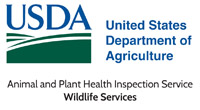U.S. Department of Agriculture: Animal and Plant Health Inspection Service
Document Type
Article
Date of this Version
2024
Citation
NeoBiota (2024) 90: 1–33
doi: 10.3897/neobiota.90.103041
Academic editor: J. Jeschke
Abstract
In October 2020, a new population of invasive brown treesnakes (Boiga irregularis) was discovered on the 33-ha Cocos Island, 2.5 km off the south coast of Guam, United States. Cocos Island is a unique conservation resource, providing refuge for many lizards and birds, including endangered species, which were extirpated from mainland Guam by invasive predators including brown treesnakes. We sought to evaluate the usefulness of toxic baiting with acetaminophen-treated carrion baits and cage trapping, common tools for the control of brown treesnakes on mainland Guam, as potential eradication tools on Cocos Island. We evaluated multiple bait types and bait presentations: on the ground, suspended in the canopy emulating aerial bait applications and in four plastic-tube bait station configurations intended to exclude non-target species. We monitored all baits with time-lapse cameras. Despite improved exclusion of non-targets by bait station design, most baits were quickly removed by non-target species, particularly coconut crabs (Birgus latro) and Mariana monitors (Varanus tsukamotoi). Monitoring of 1,250 baits available for 2,427 bait nights resulted in no observations of brown treesnakes taking any bait. Subsequently, we tested two trap types commonly used on Guam and compared trapping success with live versus dead mouse lures. In 10,553 trap nights using live and dead mouse lures, we only captured one brown treesnake, in a trap with a live mouse lure. These baiting and trapping rates are so low as to be ineffectual for all practical purposes. Concurrent visual searching and hand capture of brown treesnakes during initial rapid response efforts demonstrates that these low baiting and trapping success rates are not a result of low snake density. We make a case for our assumption that the ineffectiveness of these tools on Cocos Island is due to the context of extremely high abundance of preferred live prey, primarily large geckos and birds. Our results have profound conservation ramifications, because any future island invasions by brown treesnakes are likely to occur within similarly prey-rich environments where these baiting and trapping methods might be similarly ineffective.
Included in
Natural Resources and Conservation Commons, Natural Resources Management and Policy Commons, Other Environmental Sciences Commons, Other Veterinary Medicine Commons, Population Biology Commons, Terrestrial and Aquatic Ecology Commons, Veterinary Infectious Diseases Commons, Veterinary Microbiology and Immunobiology Commons, Veterinary Preventive Medicine, Epidemiology, and Public Health Commons, Zoology Commons


Comments
United States government work
and
License: CC0